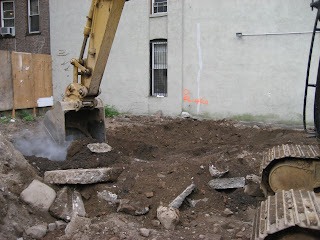It's been over two weeks since our last post. And during that time, we changed our ground face block color (GF block will be used on North Wall and East Wall aka the back yard) and our mason.
Here's what we've managed to produce this past week:
The mason delivered his scaffolding,
Our 3x10 joists were delivered and cut to size (Fire cut end shown),
We spaced the every 12" o.c and painstakingly placed our bridging in between our joists (We used joist hangers to support every perpendicular bridging member)
And layed out our first layer of plywood. I say first layer because we have another layer of warmboard (1-1/8" plywood) that goes on top. Visit warmboard.com to view this layer.


















































